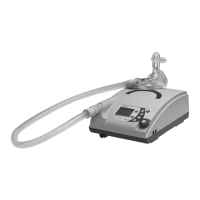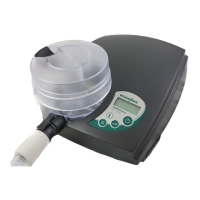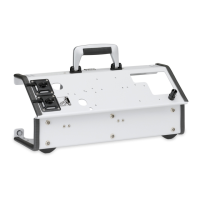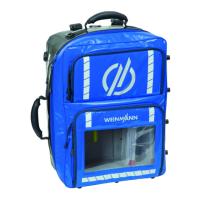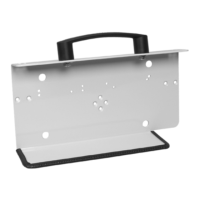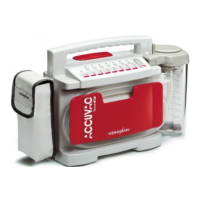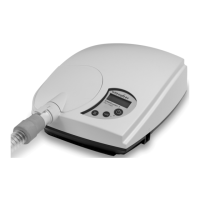2.3.3 Operating status
Three operating states are possible on the therapy device: on, off and standby.
If the device is switched on, therapy is in progress. In standby, the fan is switched off but
the device is ready for immediate operation by briefly pressing the on/off switch, provided
that the patient circuit is connected correctly. The settings on the device can be adjusted
in standby mode. If the device is switched off completely, the fan and display are also
switched off and no settings can be adjusted on the device.
2.3.4 Leakage ventilation
When leakage ventilation is used, an exhalation system continuously flushes out the CO
2
-
containing exhaled air.
2.3.5 Valve ventilation
In this case, exhalation is controlled by the patient valve.
When the single patient circuit with patient valve is used, the patient's exhaled air escapes
into the environment through the patient valve. The device controls the patient valve by
means of the valve control tube.
When the double patient circuit with patient valve is used (VENTIlogic LS only), an
exhalation tube also routes exhaled air into the ambient air through the device.
2.3.6 Therapy modes
The therapy device can be operated in the following therapy modes:
• leakage ventilation: S, T, ST, CPAP, MPVp, MPVv
• valve ventilation: PCV, aPCV, PSV, VCV (VENTIlogic LS only), aVCV
(VENTIlogic LS only), SIMV, MPVp, MPVv
The mode required for therapy is set on the device by the doctor supervising treatment.
The doctor can activate volume compensation in pressure-controlled modes S, T, ST, TA,
PCV, PSV and aPCV. A minimum volume and maximum pressure rise are set to achieve this.
If the minimum volume is undershot, the device automatically and continuously increases
pressure up to the set maximum pressure (therapy pressure + max. pressure rise).
In controlled modes T, PCV and VCV (VENTIlogic LS only) and in assisted-controlled modes
ST, PSV, aVCV (VENTIlogic LS only) and aPCV, the doctor can set respiratory frequency in
the range from 5 to 45 breaths per minute and inspiration time in the range from 15 % to
67 % of the respiratory period.
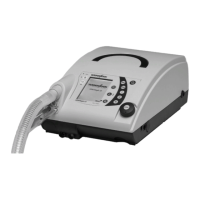
